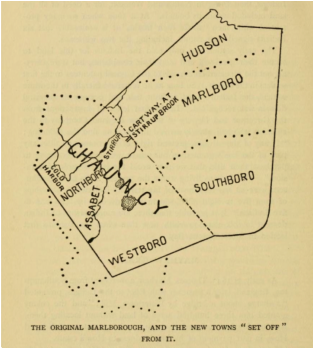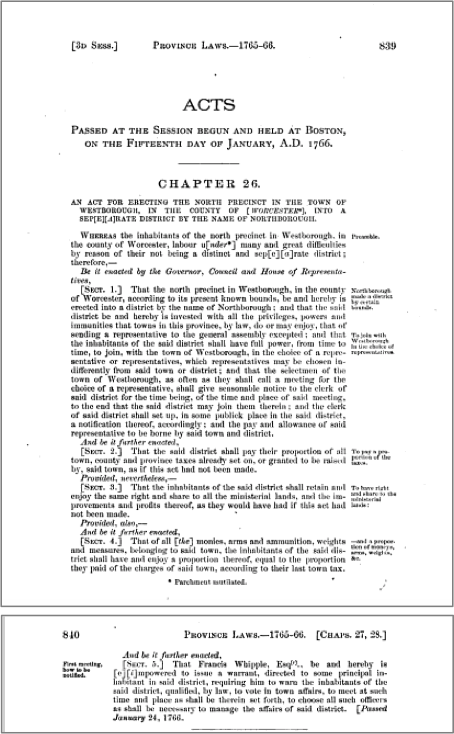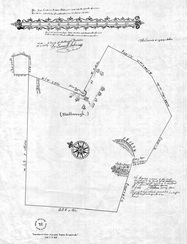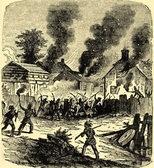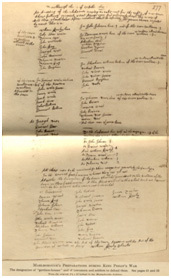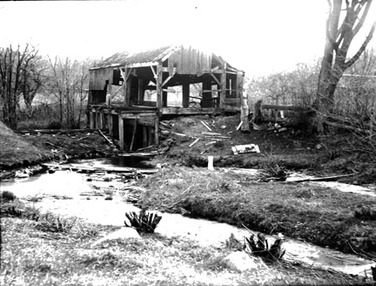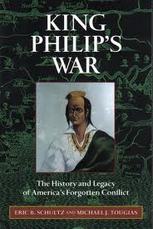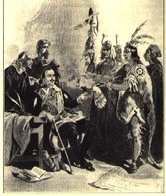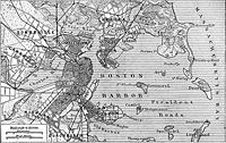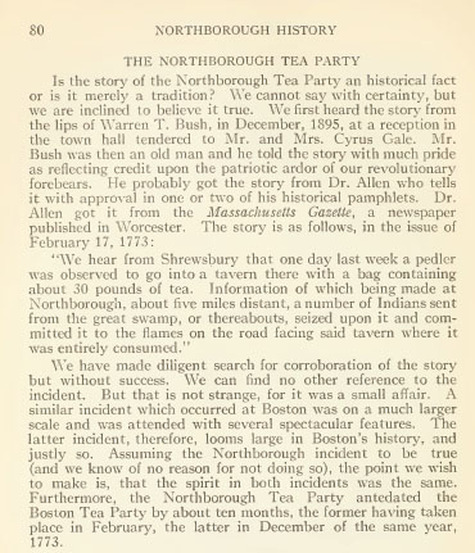|
Map of original Marlborough Plantation with modern town overlay (from The History of Westborough) The way New England towns were settled by the English was actually very common across Massachusetts. Religious dissenters (primarily Puritan) established communities where there was plenty of land and other natural resources and followed traditional English laws. Towns were built around the Meeting House, the central location of all things religious and political. Residents were primarily farming families. Couples bore many children to work the family farms and faced the odds of losing some to diseases like smallpox or the flu. After a few generations in those early communities, there was not enough open land for the increasing number of growing families. Surveyors headed westward to find new areas for establishing new towns. For example, the early colonial town (or “Plantation”) of Sudbury, Massachusetts became crowded and a handful of young men set off to find a new home in the adjacent combined lands of what is now Marlborough, Hudson, Northborough, Westborough, and Southborough. In that manner, "Marlborough Plantation” was settled in 1656 and the first settlers lived near the center of modern Marlborough, farming land in the outer areas of the town. Over subsequent generations, families continued to grow in number and needed to find more living space outside of the center of Marlborough Plantation. A village a few miles west at Lake Chauncy sprung up (the "west borough"), where farmers of the western stretch of the Plantation (Northborough and Westborough combined) could live closer to where they worked during the day. However, the new village was inconveniently far from the Plantation Meeting House; it was a slow and hilly trip back to the meeting house every Sunday. It followed that once there was enough people living in Chauncy to warrant building their own meeting house, hiring their own minister, and “managing their own affairs,” the villagers petitioned for separation from Marlborough. In 1717, the new independent town of Westborough was officially established and comprised the lands of modern Northborough and Westborough. When the Westborough meeting house moved from Lake Chauncy to three miles south to the center of modern day Westborough, there were well over 30 families living in the “north part” of the town who again found themselves facing a very long and difficult trip back and forth on required meeting days. Can you just imagine the families, on an early wintery Sunday morning, trying to be up, dressed, and ready to march down the hazardous road [what is now Rt. 135] to church in Westborough Center? The devoted northern Puritan families were outraged even more by the inequity of their situation when finding themselves at funerals without a minister; he himself did not like to make the long trek up north to Brigham Street Old Burial Ground. To address these religious concerns, the northern family heads met and petitioned in 1744 to become a precinct of Westborough. Note that a “precinct” was distinctly different from a “town”: the newly formed Northern Precinct would have its own meeting house and preacher but would remain politically and fiscally a part of the town of Westborough. Over the two decades following the 1744 petition, there were lingering serious challenges because the Northern Precinct was not fully independent from Westborough. For example, elected northern officials found it difficult to travel south to important town meetings and represent the interests of the northern families. Another problem was that the Northern Precinct was viewed as only one of the town's three school districts and the teacher was not available full-time in any single district. Adding fuel to the flame, no funding was made for Northern Precinct schools, highways, or other types of community improvements. To finally achieve the independence they had sought and desired for so long, town founders successfully presented a petition to the General Court in Boston. The District of Northborough was officially formed on the 15 January 1766 and the district became a fully-fledged town on 23 August 1775. SOURCES: Clifford, John Henry et al. The Acts and Resolves, Public and Private, of the Province of the Massachusetts Bay: to Which are Prefixed the Charters of the Province with Historical and Explanatory Notes, and an Appendix, Volume IV. Boston, Massachusetts: Wright & Potter, 1890. DeForest, Heman Packard and Edward Craig Bates. The History of Westborough, Massachusetts. Westborough Massachusetts: Town of Westborough, 1891. Kent, Josiah Coleman. Northborough History. Newton, Massachusetts: Garden City Press, 1921. Parkman, Ebenezer. The Diary of Ebenezer Parkman (1703-1782): First Part, Three Volumes in One (1719-1755). Francis G. Walett, editor. Worcester: American Antiquarian Society, 1974. Happy 250th Birthday, Northborough!
1 Comment
Local Action in King Philip's War |
AuthorBeth Finch McCarthy
|
